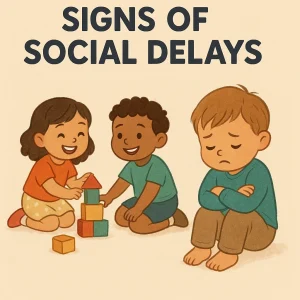How Technology Affects Autism Spectrum Behaviors
By Wellness Hub
Last Updated: September 23, 2024
In today’s tech-driven world, technology surrounds us—from smartphones and tablets to video games and apps. It’s an integral part of how we live, work, and learn, and for children, it’s nearly everywhere. But what about its effect on children, especially those with autism spectrum behaviors? For parents and caregivers of children with autism, technology can be both a blessing and a challenge. Learn how technology influences autism spectrum behaviors, explore the benefits and challenges, and get tips on managing screen time for kids with autism. Balancing its use is key to supporting positive outcomes.
What Are Autism Spectrum Behaviors?
When we talk about autism spectrum behaviors, we’re referring to patterns of behavior that are often seen in children with autism. These behaviors can vary widely, but some traits are commonly shared among children on the autism spectrum.
One of the most well-known traits is difficulty with communication. This can range from being non-verbal to struggling with understanding social cues, like facial expressions or tone of voice. Children with autism may also find it hard to start or maintain conversations, which can affect how they interact with others.
Another common trait is repetitive behaviors. This can look like repeating certain movements, words, or actions over and over again. You might notice a child lining up their toys in the same order each time or becoming upset if their routine is changed. These behaviors are often a way for children to find comfort or make sense of their environment.
Sensitivity to surroundings is another key feature of autism spectrum behaviors. Some children might be highly sensitive to sounds, lights, or textures. For example, a loud noise that most people wouldn’t think twice about could feel overwhelming or even painful to a child with autism.
Understanding these behaviors is important because it helps us support children in ways that make sense for them. Whether you’re a parent, teacher, or caregiver, recognizing these behaviors means you can respond in a helpful and understanding way. It’s not just about knowing what to expect—it’s about finding ways to connect and support the child’s development in the best way possible.
Also read: Understanding Virtual Autism: Impact of Screen Time
Technology’s Role in Autism
Technology has become an everyday part of life for most of us, including children with autism. From educational apps to video games, children on the autism spectrum often engage with technology in ways that are both unique and beneficial. Many parents have found that tech tools can help their children learn new skills, communicate more easily, or simply enjoy their favorite activities. Apps designed to improve social skills, interactive games that teach routines, and devices that support communication have become essential resources.
But like anything, technology can be a double-edged sword. While it provides helpful support, too much screen time or the wrong type of content can sometimes lead to challenges. For instance, many children with autism enjoy the structure and repetition that technology offers, but this can also lead to overdependence. It’s easy for children to spend hours on devices, which can sometimes reduce their opportunities for real-world interactions and play.
Striking a balance is key. Technology can be an amazing tool when used thoughtfully, but it’s important to understand when and how it’s affecting your child’s behavior. As we explore further in this article, we’ll look at the positive and negative impacts of technology on children with autism and provide tips on how to make the most of it.
Also read: Supporting Children with Autism via Online Behavioral Therapy
Positive Effects of Technology
Helping Communication:
For many children with autism, speaking or communicating can be difficult. Thankfully, technology provides tools that allow kids to use pictures or words to express their needs and feelings more easily. This reduces the stress of communication and helps them connect better with others.
Learning Support:
Educational apps can also support children with autism by helping them learn important skills in a fun and interactive way. These apps teach reading, counting, and even social skills through games and activities.
Negative Effects of Technology
Too Much Screen Time:
Although technology has its benefits, spending too much time on screens can cause issues. Children with autism may become so focused on their devices that they miss out on real-world interactions. This could make it harder for them to practice important social skills, leading to more isolation. Balancing screen time with other activities is key.
Overstimulation:
Some apps and games, especially those with lots of bright colors, fast movements, or loud sounds, can overstimulate children with autism. This can make them feel stressed or upset. It’s important to choose apps and games that are calm and not too overwhelming.
Sleep Issues:
Too much screen time, especially before bed, can affect sleep. The light from screens can make it harder for children to fall asleep and stay asleep. Since children with autism often have sleep challenges, it’s a good idea to limit screens at night and focus on calming activities instead.
Overdependence:
While technology can be helpful, children can sometimes rely too much on it. If they use apps or devices for everything—learning, calming down, or playing—they might miss out on developing other important skills. It’s helpful to encourage a balance of screen-based and non-screen activities to support their overall development.
How to Balance Technology Use
Set Limits:
One of the best ways to ensure technology doesn’t take over is to set time limits on screen use. For children with autism, having clear boundaries around screen time can help avoid overuse and prevent dependency on devices. A good approach is to break up screen time into manageable chunks throughout the day. For example, setting a limit of 30 minutes to an hour at a time, followed by a break, can make sure that your child stays engaged with other activities too.
Parent Involvement:
Getting involved in your child’s tech time can also make a big difference. When parents participate—whether by playing games together, using educational apps, or simply watching over their child’s activity—it turns screen time into an opportunity for connection. Not only does this give you a chance to monitor what your child is doing, but it also encourages positive interactions that go beyond the screen. Plus, it allows you to guide them in using technology in more meaningful ways, reinforcing learning and social skills.
Read more: Virtual Autism in Kids: What Parents Need to Know
Encourage Offline Play:
It’s important to balance screen time with offline activities. Encouraging your child to play outside, engage in creative tasks, or participate in physical activities helps them develop a range of skills beyond what technology can offer. Outdoor play or hands-on activities like building with blocks, painting, or playing pretend can help stimulate their imagination and social skills. These breaks from screens are also great for reducing overstimulation and helping children with autism feel more grounded in their environment.
Technology Use Guidelines for Children with Autism
| Age Group | Recommended Screen Time | Types of Technology Use | Suggested Offline Activities |
| 3-6 years | 1 hour/day | – Educational apps – Interactive storytelling – Simple games | – Outdoor play (e.g., running, playing on swings) – Building blocks – Creative play (e.g., drawing, painting) |
| 7-12 years | 1.5 hours/day | – Educational tools – Social skills apps – Problem-solving games | – Creative tasks (e.g., crafting, LEGO) – Sports activities – Group play with friends or siblings |
| 13+ years | 2 hours/day | – Online learning platforms – Video games with social interaction | – Sports (e.g., soccer, basketball) – Reading books – Group activities (e.g., clubs, team sports) |
Conclusion
Technology can be a great tool for children with autism. It helps with communication, learning, and daily routines, and can even provide a calming effect when children feel overwhelmed. However, too much screen time can lead to problems like overstimulation, trouble sleeping, and less social interaction. It’s important for parents to recognize both the positive and negative effects of technology.
The key is finding a balance. By setting limits on screen time, getting involved in your child’s tech use, and encouraging offline activities, parents can ensure technology is helpful without becoming overwhelming. At Wellness Hub, we provide resources and support to help families manage these challenges and make the most of the tools available for their children’s growth and well-being.
Frequently Asked Questions:
1. How does technology help children with autism communicate?
Technology provides communication tools, such as apps and speech-generating devices, that allow children with autism to express themselves more easily. These tools can help non-verbal children communicate their needs using symbols, pictures, or words.
2. What are the positive effects of technology on children with autism?
Technology can support children with autism by improving communication, providing learning tools, helping with routines, and offering calming activities when they feel overwhelmed.
3. Can too much screen time affect children with autism negatively?
Yes, excessive screen time can lead to issues such as overstimulation, reduced social interaction, sleep disturbances, and overdependence on technology.
4. How can I manage my child’s screen time effectively?
You can manage screen time by setting clear limits, using timers, and encouraging breaks. It’s also helpful to balance technology use with offline activities, such as outdoor play or creative tasks.
5. How can technology improve routine management for children with autism?
Technology can assist children with autism in following daily routines through apps that create visual schedules and reminders. These tools reduce anxiety by providing a clear, structured plan for the day, helping children transition smoothly between tasks.
6. Can technology overstimulate children with autism?
Yes, fast-moving or highly stimulating games and apps can sometimes cause sensory overload for children with autism. It’s important to choose calming and appropriate apps for your child.
7. How does Wellness Hub support families of children with autism?
Wellness Hub offers resources and guidance to help families manage the challenges of raising a child with autism, including tips on balancing technology use and supporting development.
8. How can parents get involved in their child’s technology use?
Parents can participate by playing educational games together, monitoring their child’s screen time, and guiding them in using apps or tools that support learning and development. This involvement helps create meaningful interactions beyond just screen time.
9. What are some good offline activities for children with autism to balance screen time?
Offline activities such as outdoor play, building with blocks, painting, sensory play, or engaging in physical activities can help children with autism develop their creativity, social skills, and motor abilities while reducing reliance on technology.
10. Can technology improve social skills in children with autism?
Yes, certain apps and platforms are designed to help children with autism practice social skills, like taking turns, recognizing emotions, and understanding social cues, which can contribute to their overall social development.
About the Author:
Anuradha Karanam
Speech-language pathologist (7+ years of experience)
Anuradha Karanam is a skilled speech-language pathologist with over 6 years of experience. Fluent in Tamil, Telugu, Hindi, and English, she specializes in parent counseling, speech sound disorders, fluency assessment, and speech-language evaluations. Anuradha excels at working with children with developmental disorders, offering creative and effective therapy programs. Currently, at Wellness Hub, she holds a BASLP degree and is registered with the RCI (CRR No A85500). Her patience, ambition, and dedication make her a trusted expert in her field.
Book your Free Consultation Today
Parent/Caregiver Info:
Client’s Details:
* Error Message









